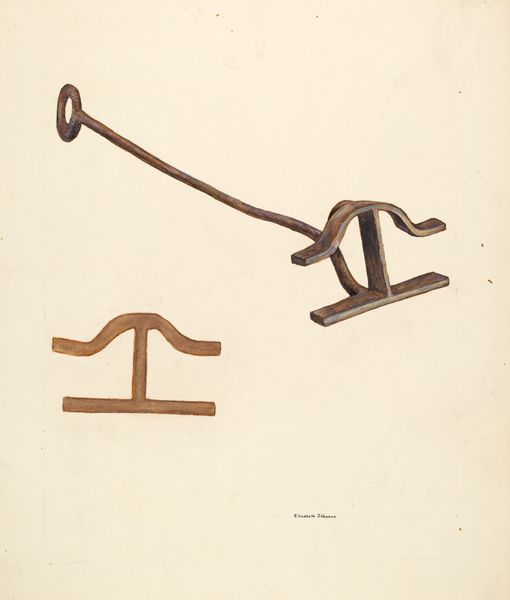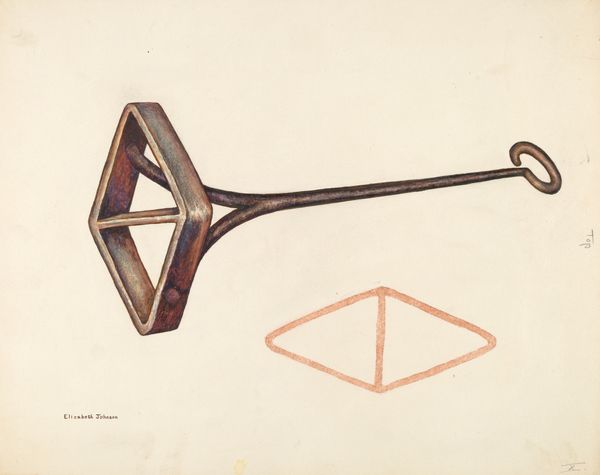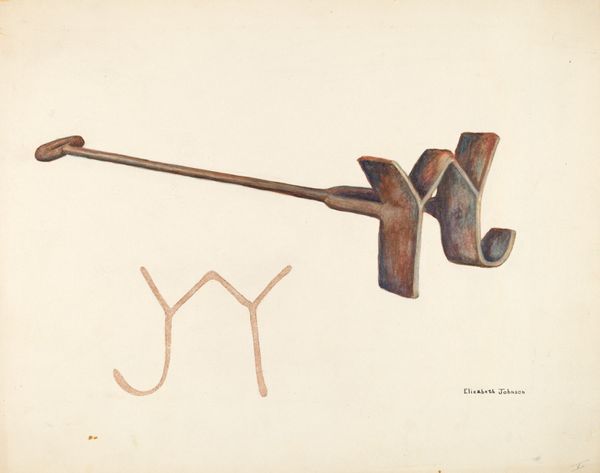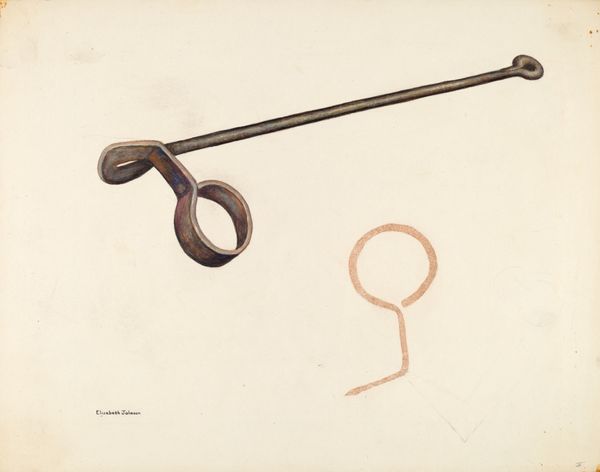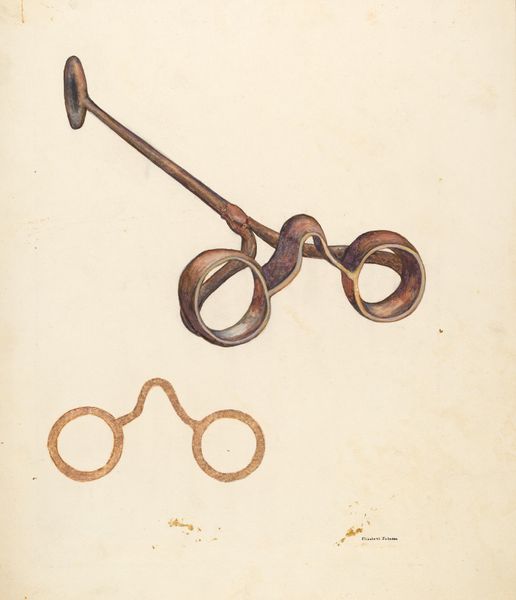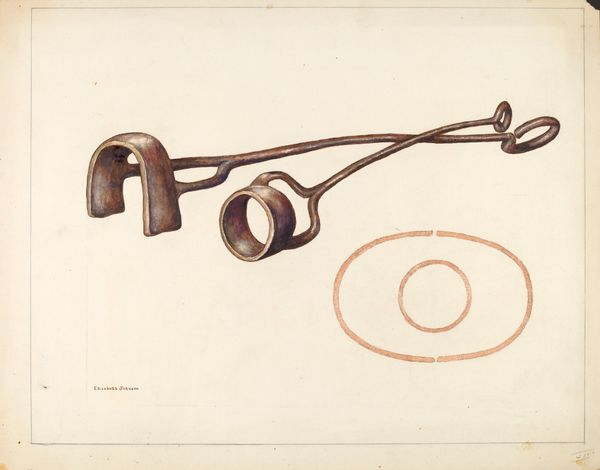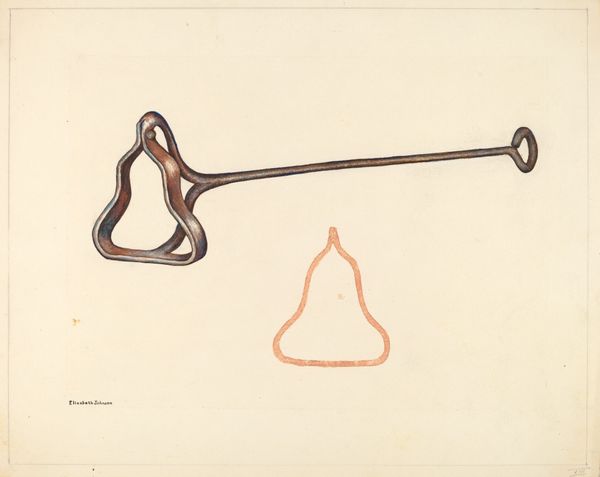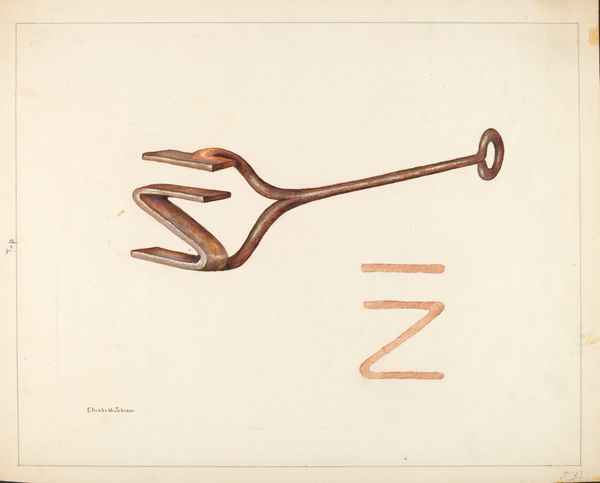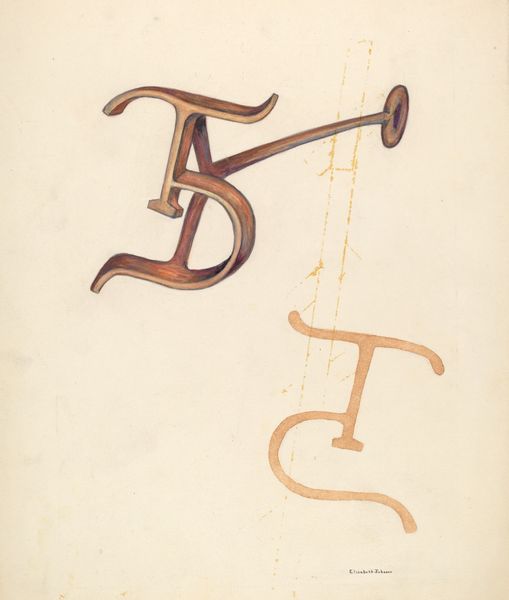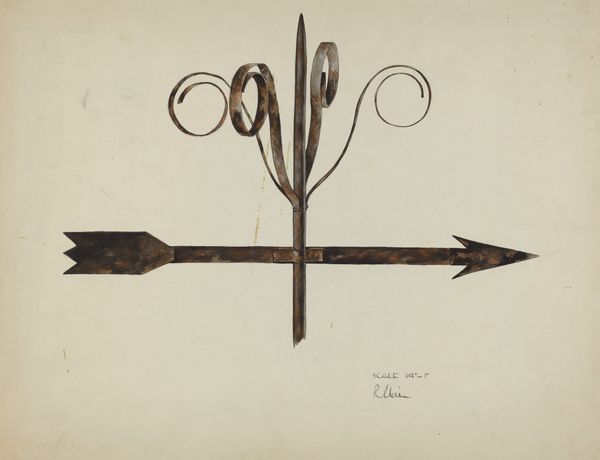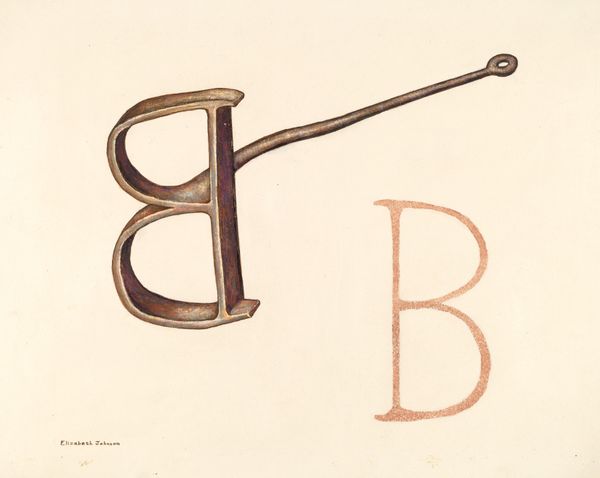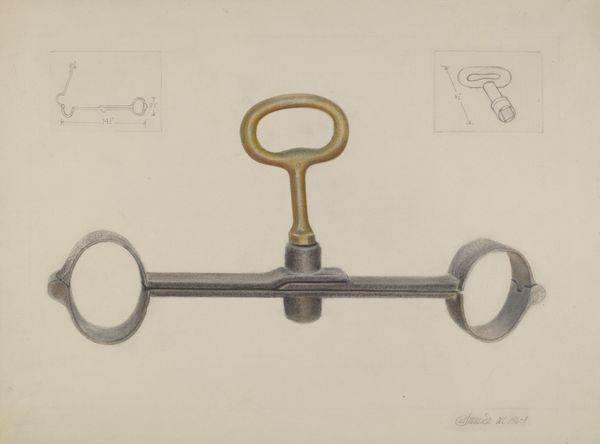
drawing, watercolor, pencil
#
drawing
#
landscape
#
watercolor
#
pencil drawing
#
pencil
Dimensions: overall: 27.8 x 35.7 cm (10 15/16 x 14 1/16 in.) Original IAD Object: 34" long
Copyright: National Gallery of Art: CC0 1.0
Curator: Alright, let's dive into this artwork, "Branding Iron," circa 1942, rendered with pencil and watercolor. Editor: It's… surprisingly gentle, considering. I mean, branding iron – ouch, right? But there's this soft focus, like a memory. Curator: Absolutely. Branding irons are, of course, associated with the industrialization of cattle ranching, and its visual symbolism is quite powerful when it comes to claiming ownership. Looking closer we can see its handle. It seems to be meticulously rendered, which really speaks to an appreciation for this object as part of ranching. Editor: You know, it also feels a little forlorn. Almost like an abandoned tool from another era. I am drawn to the shapes as well. It is elegant, refined, in a utilitarian sort of way. And why those additional sketches? Curator: Well, one could see them as preliminary drawings, studies even. The image gives hints to a process, and this element brings some narrative, even artistic legitimacy to the drawing. Editor: The artist also seemed so interested in the reflections from the metallic parts, such attention gives such a weightless medium almost a palpable heaviness. There is so much tenderness for a simple tool here! Curator: What you highlight leads to further interpretations. One can find it interesting how in that period there were efforts of constructing a clear narrative around ranching to cultivate and even capitalize on American folklore. Editor: Fascinating, to see the convergence between this object and nation-building in mid-20th century America. All those subtle layers are hidden within those two “C” letterforms! Curator: Exactly. It becomes more than a tool, but part of a broader conversation about land, ownership, and identity. It highlights the public role of imagery in building a cultural brand. Editor: I'll never look at a simple watercolor the same way. Makes you think, what other seemingly benign objects are secretly carrying a cultural history on their surfaces? Curator: Indeed. And that, in essence, is why studying and preserving these types of works is so important: they invite us to question the narratives we inherit and actively engage with our own perceptions.
Comments
No comments
Be the first to comment and join the conversation on the ultimate creative platform.

